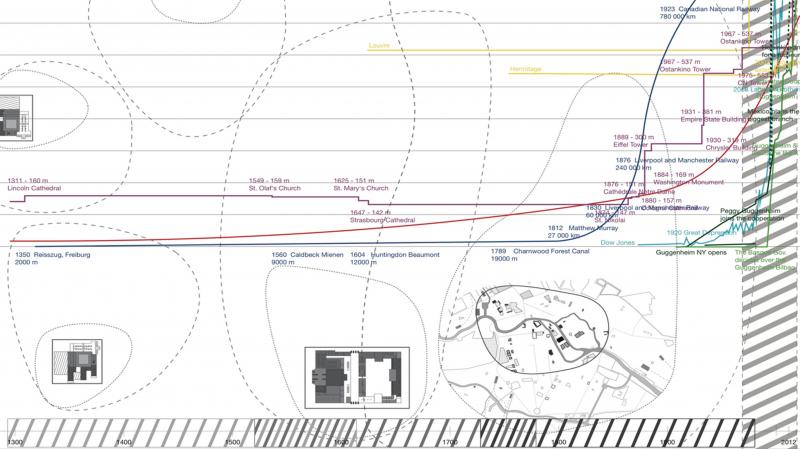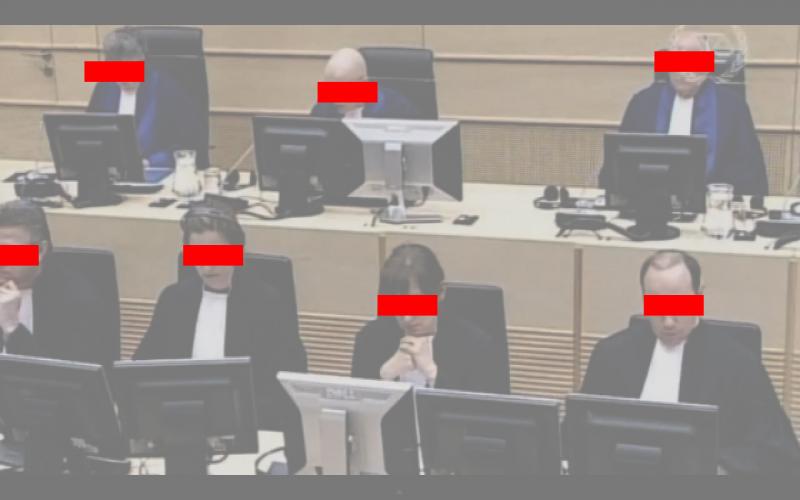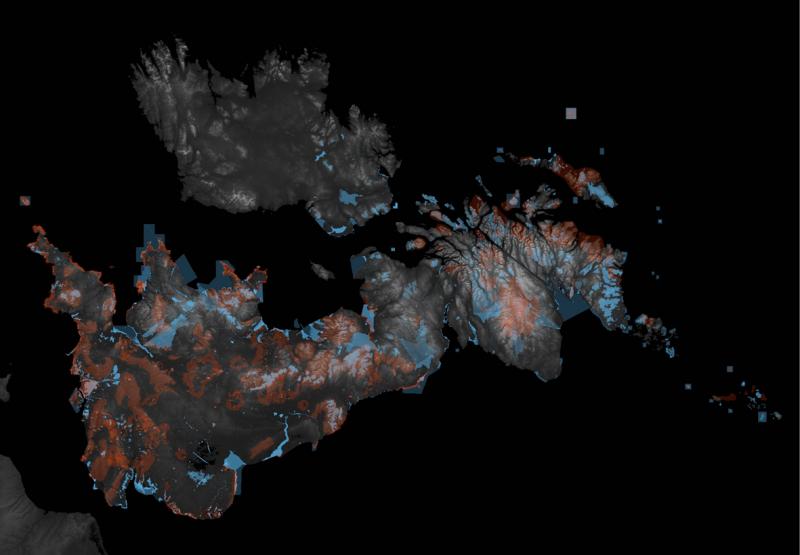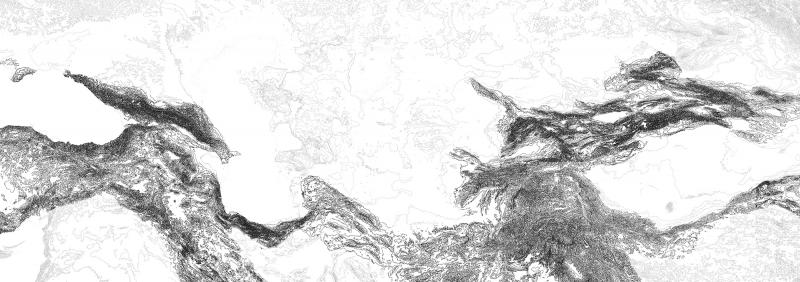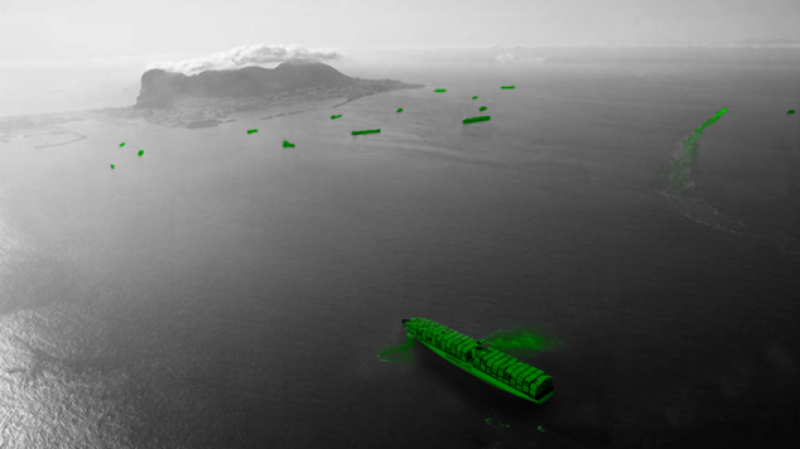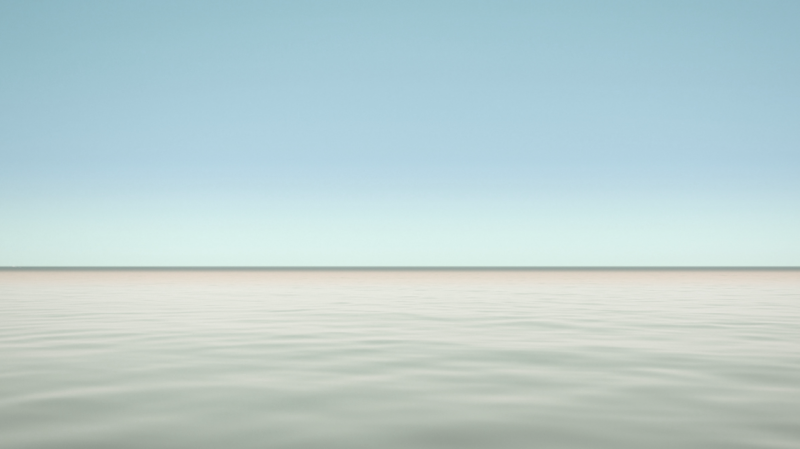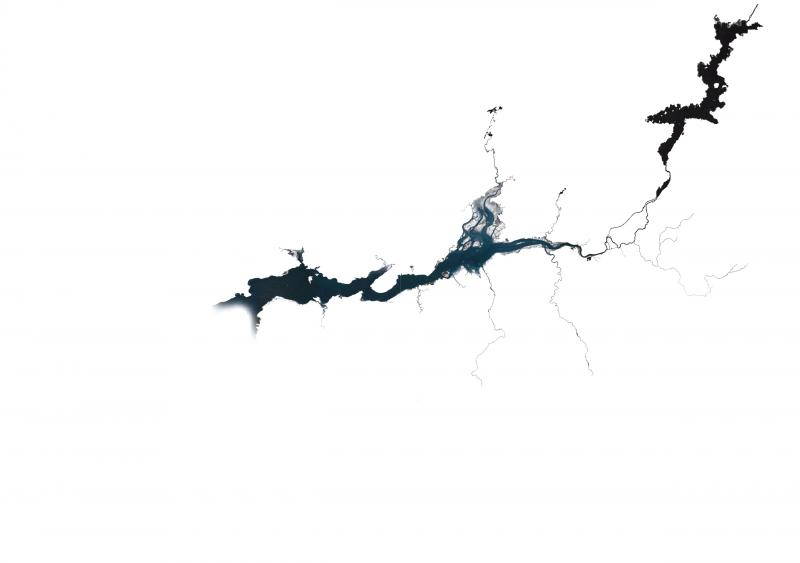The European peninsula is a vast stretch of land shaped by two parallel systems of seas: to the north, an increasing exploitation of mineral and natural resources are undermining the links between sovereignty and the spaces of a growing number of non-state actors. Change in the North Atlantic, the North Sea, the Barents Sea, the White Sea and in the Baltic are realigning the territorial forms of the higher latitudes, moving towards new interconnections and new expert knowledge. These escalatory processes are not only shaping the inhabited spaces and infrastructures but also impacting a wide, geopolitical space. Change in this part of Europe is explored as a set of complex interactions between multiple actors, processes and practices.
To the south, the waters linking the Strait of Gibraltar, the Mediterranean and the Black Sea are becoming the only solid part of a region in turmoil. The individual trajectories that cross it are detected, surveilled and monitored. The individual spaces that the intensification of these flows of migrants, goods, oil, money and ideas open up are fragmented, scattered and often disconnected. These processes re-envision the circulations of Europe as deep-spaces linking change in international law to individual transformations in the built spaces, extending well beyond the maritime spaces and into the coastal ridges of the Eurasian mountains.
We detected these changes by reimagining how material spaces are carved and moulded by the expansion and reshaping of sovereignty and power in the twenty-first century. Automatic imaging technologies, remote sensing, surveying and measuring the multiplicity of non-aligned changes in the spaces of the European project are explored as instigations for integrated approaches to complex transformations. Agents operating both above the state – the EU, IMF, WTO, NATO, World Bank, ICJ, UN, the International Standardisation Organisation, Red Cross, UNHCR, NGOs etc. – as well as beneath the state – the financial corporations, the lobby groups, scientific missions, small and medium enterprises, etc – are establishing a new architecture open to radical negotiations.
Thanks to Gordon Campbell (European Space Agency)
Philippe Rekacewicz (Le Monde Diplomatique)
Janike Kampevold Larsen
Marianne Skjulhaug
Giles Bruce
Javier Castañón
Kate Davies
Oliver Domeisen
Tom Fox
Kostas Grigoriadis
Eugene Han
Joel Newman
Christopher Pierce
Brett Steele
Theo Sarantoglou
Ingrid Schröder
Susan Schuppli
Michael Weinstock
Liam Young
Vasilis Marmatakis
Katerina Kotzia
Aristide Antonas
Dimitris Antonakakis
Vasiliki Sagia
Doxiadis Archives
European Commission
History and Critical Thinking MA students and Marina Lathouri
Goldsmiths Research Architecture MA students

